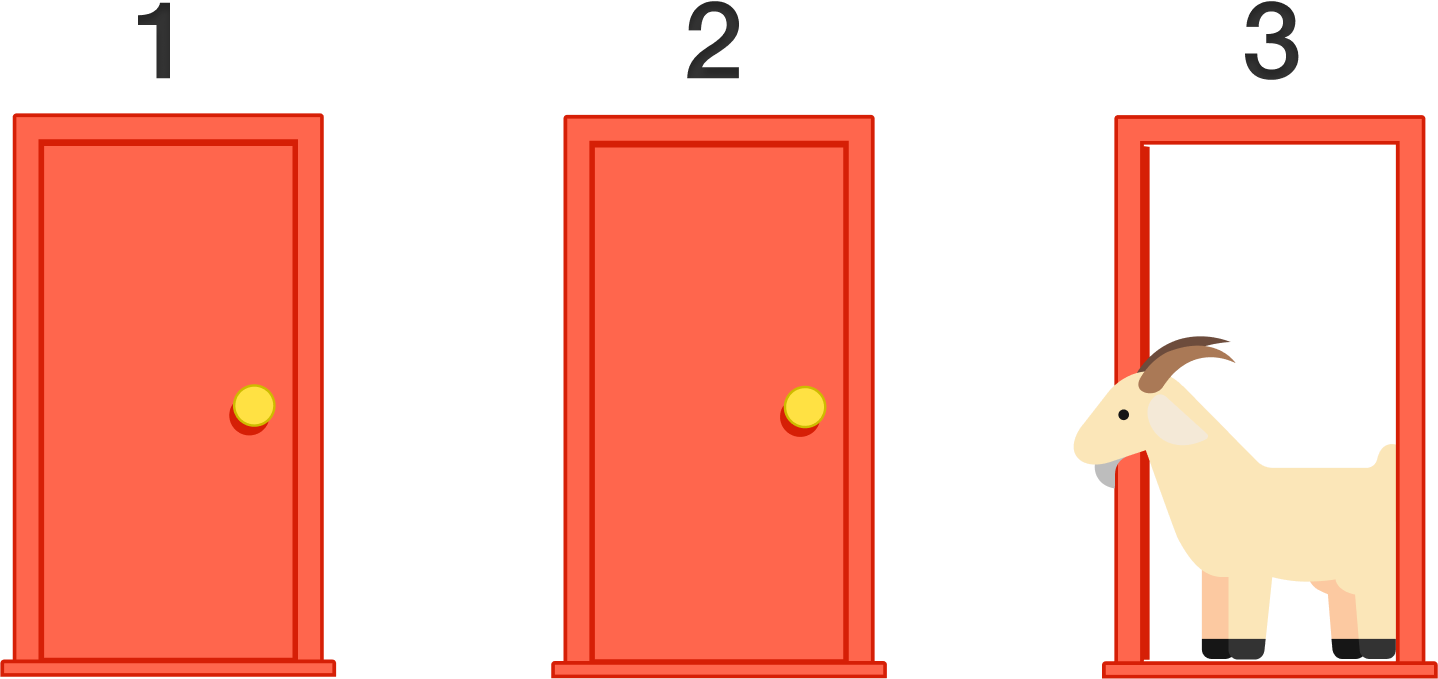Problems
One of \(n\) prizes is embedded in each chewing gum pack, where each prize has probability \(1/n\) of being found.
How many packets of gum, on average, should I buy to collect the full collection prizes?
Every evening Ross arrives at a random time to the bus stop. Two bus routes stop at this bus stop. One of the routes takes Ross home, and the other takes him to visit his friend Rachel. Ross is waiting for the first bus and depending on which bus arrives, he goes either home or to his friend’s house. After a while, Ross noticed that he is twice as likely to visit Rachel than to be at home. Based on this, Ross concludes that one of the buses runs twice as often as the other. Is he right? Can buses run at the same frequency when the condition of the task is met? (It is assumed that buses do not run randomly, but on a certain schedule).
When boarding a plane, a line of \(n\) passengers was formed, each of whom has a ticket for one of the \(n\) places. The first in the line is a crazy old man. He runs onto the plane and sits down in a random place (perhaps, his own). Then passengers take turns to take their seats, and in the case that their place is already occupied, they sit randomly on one of the vacant seats. What is the probability that the last passenger will take his assigned seat?
Let \(f (x)\) be a polynomial about which it is known that the equation \(f (x) = x\) has no roots. Prove that then the equation \(f (f (x)) = x\) does not have any roots.
Prove that there exist numbers, that can be presented in no fewer than 100 ways in the form of a summation of 20001 terms, each of which is the 2000th power of a whole number.
Prove that a convex quadrilateral \(ICEF\) can have a circle inscribed into it if and only if \(IC+EH = CE+IF\).
Solve the equations in integers:
a) \(3x^2 + 5y^2 = 345\);
b) \(1 + x + x^2 + x^3 = 2^y\).
In honor of the March 8 holiday, a competition of performances was organized. Two performances reached the final. \(N\) students of the 5th grade played in the first one and \(n\) students of the 4th grade played in the second one. The performance was attended by \(2n\) mothers of all \(2n\) students. The best performance is chosen by a vote of the mothers. It is known that half of the mothers vote honestly, i.e. for the performance that was truly better and the mothers of the other half in any case vote for the performance in which their child participates.
a) Find the probability of the best performance winning by a majority of votes.
b) The same question but this time more than two performances made it to the final.
This is a famous problem, called Monty Hall problem after a popular
TV show in America.
In the problem, you are on a game show, being asked to choose between
three doors. Behind each door, there is either a car or a goat. You
choose a door. The host, Monty Hall, picks one of the other doors, which
he knows has a goat behind it, and opens it, showing you the goat. (You
know, by the rules of the game, that Monty will always reveal a goat.)
Monty then asks whether you would like to switch your choice of door to
the other remaining door. Assuming you prefer having a car more than
having a goat, do you choose to switch or not to switch?

Alice the fox and Basilio the cat have grown \(20\) counterfeit bills on a money tree and now write seven-digit numbers on them. Each bill has \(7\) empty cells for numbers. Basilio calls out one digit "1" or "2" (he doesn’t know the others), and Alice writes the number into any empty cell of any bill and shows the result to Basilio. When all the cells are filled, Basilio takes as many bills with different numbers as possible (out of several with the same number, he takes only one), and the rest is taken by Alice. What is the largest number of bills Basilio can get, regardless of Alice’s actions?